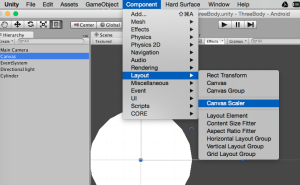I have returned to N-body, my first mobile effort , with the goal of making it cross -platform and adding new ideas. Given all my recent positive experiences with the Unity game engine the idea is to port as much as possible and avoid “the rewrite”. (This has a very tempestuous history in software and is one of the things Joel Spolsky thinks you should never do.)
The good news for the small community who have enjoyed N-body is that moving it to Unity is going quite well, and I am FULL of cool ideas I want to add: gravitational fields for non-spherical objects, galactic potentials, dust accretion – it’s almost endless. The bad news is that I read a great Sci-Fi novel “The Three-Body Problem” by one of China’s top sci-fi writers, and this has caused me to set aside Nbody for awhile. “The Three Body Problem” reminded me of the non Sci-Fi book with the same title (you could see how that would happen). One of the things I made a note of when I read the more academic of these books was the static three body problem. The question is: can three bodies be placed in initial conditions with zero velocity such that they will stay in a bound configuration? Would you expect that since gravity is attractive they would “keep together”, perhaps with some cool triple orbits?
As I was reading the sci-fi 3BP I was feeling like I needed a break from NBody and figured I’d try a quick mock up of the static three body problem in Unity. As I get more kung-fu with Unity (and using the leap frog integrator I had ported for Nbody) this kind of side project becomes very do-able. I spent an afternoon doing the basics and found that there was a nice little physics “time waster” game here.
Shortly after, during my usual lunch time perusal of arxiv, I found a paper about using GPUs for N-body simulations which mentioned replacing the three bodies with three binaries. Another addition for the ThreeBody app.
This was all about a month ago and since then I have added the minimum of “gamification” so others can take a swing at this problem on their mobile devices. It is weirdly addictive and a good way to see how sensitive the problem is to initial conditions. Hope someone out there also finds it fun.
You can find ThreeBody for Android and Blackberry (coming soon to Amazon and iOS). There is some further technical detail.
[social4i size=”large” align=”float-right”]



